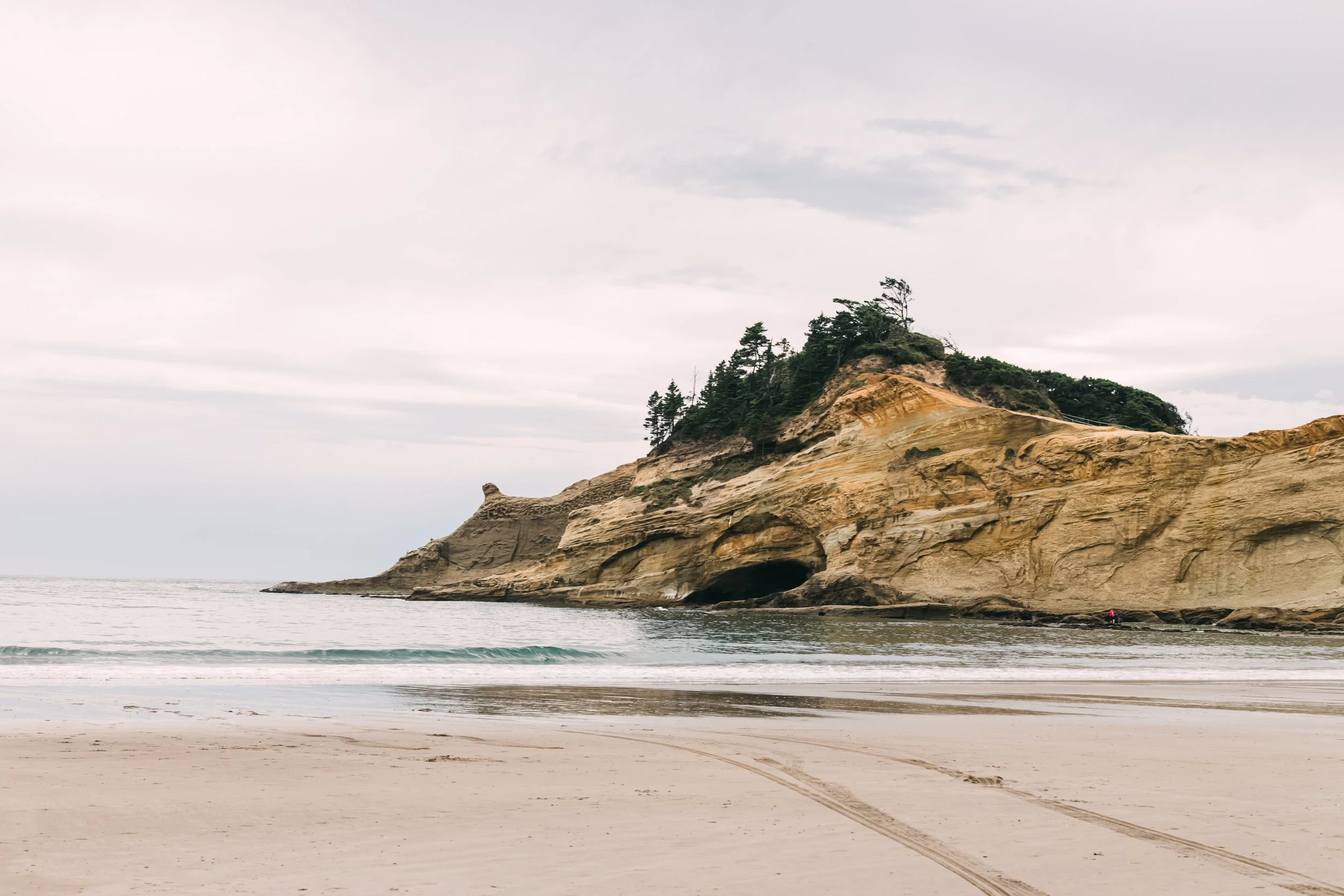Honoring the First Stewards of Cape Kiwanda
BEFORE CONTACT
The Confederated Tribes of Siletz Indians descend from more than twenty separate tribes and bands who lived along Oregon’s coast, Coast Range, and western valleys. Ancestors spoke at least ten distinct languages, including Athabaskan, Salishan, Yakonan, and Kalapuyan. Villages were located near rivers, estuaries, and forests, with economies based on fishing, especially salmon, as well as shellfish gathering, hunting, and harvesting plant foods.
1850S TREATIES AND REMOVAL
In the early 1850s, United States officials negotiated treaties with coastal and inland tribes, promising protection, rations, and services in exchange for vast tracts of land. In 1855, after the Rogue River Wars and other conflicts, survivors from across western Oregon were forcibly moved to the newly created Coast Reservation, later known as the Siletz Reservation. This land originally stretched over 1.1 million acres along Oregon’s central coast.
LATE 1800S RESERVATION REDUCTIONS
In the decades that followed, federal policies broke up the reservation. Large sections of land were taken in 1865 and 1875 and opened to settlers. During the Allotment Era that began with the Dawes Act of 1887, lands were divided among individual tribal members, with the remaining “surplus” sold to non-Native settlers. By the early 1900s, the Siletz people had lost almost all communal land.
MID 1900S TERMINATION
In 1954, the federal government terminated its recognition of the Siletz, ending treaty-based services and programs. Many tribal members faced economic hardship and were forced to leave their homelands in search of work.
1970S RESTORATION
In the 1970s, tribal members organized politically to regain recognition. On November 18, 1977, President Jimmy Carter signed legislation restoring federal recognition of the Confederated Tribes of Siletz Indians, making them one of the first tribes in the United States to be restored.
SINCE 1977 RENEWAL AND GROWTH
The tribe established a tribal government headquartered in Siletz, Oregon. Land acquisition programs have rebuilt a modest land base of more than 15,000 acres. Cultural revitalization includes language restoration, traditional arts, and seasonal food-gathering practices. Economic enterprises, natural resource programs, and education initiatives support both tribal members and surrounding communities.
WHERE THEY LIVED AND WHO THEY WERE
Before Euro-American settlement, the peoples now known as the Siletz lived along Oregon’s central and northern coast, particularly around the Siletz River and nearby coastal lowlands, as well as in inland valleys. The Confederated Tribes of Siletz Indians are a multi-ethnic confederation whose ancestors included people who spoke at least ten different languages, reflecting a wide ancestral territory stretching across much of western Oregon.
ECONOMY, SETTLEMENT, AND CULTURE
Coastal Siletz peoples lived in village networks tied to rivers, estuaries, and the nearshore ocean. They relied on marine resources such as salmon, shellfish, and sea mammals, as well as river fishing, hunting, and gathered plant foods. Social life centered on seasonal cycles, village houses, potlatch-style exchanges, and distinct linguistic and cultural identities that maintained strong trade and marriage ties across the coast.
19TH CENTURY UPHEAVAL
In the 1850s, increasing settler and miner encroachment and armed conflict, including the Rogue River and other coastal wars, led to treaty-making and forced removals. In 1855 and 1856, many coastal bands were relocated to the newly established Coast Reservation along the central Oregon coast. The reservation originally covered a very large area, but federal actions over the following decades drastically reduced the land base.
LOSS, TERMINATION, AND RESTORATION IN THE 20TH CENTURY
Through allotment, “surplus” land sales, and federal termination policies, the Siletz lost most of their lands and tribal services. By 1900, the reservation existed only in name. The Confederated Tribes of Siletz Indians fought for recognition and were restored in 1977. Since then, they have rebuilt their land base and government institutions while working to revive languages and culture.
CONTEMPORARY CULTURAL AND RESOURCE RESURGENCE
Today, the Confederated Tribes of Siletz Indians maintain headquarters in Siletz, Oregon, and operate language revitalization and cultural programs. They are active in natural resource and marine restoration projects, including initiatives and legal actions that restore hunting, fishing, and gathering rights. These efforts strengthen their connection to traditional coastal lifeways and resource management practices.
BOATS DUGOUT CANOES
Dugout canoes were crafted primarily from red cedar, Sitka spruce, or western hemlock, trees valued for size, workability, and resistance to rot. Large logs were felled, often by controlled burning before metal tools were available, then hollowed using fire, adzes, and chisels. The sides were thinned and expanded by carefully steaming the wood, which increased stability. Ocean-going forms often had upturned, pointed ends to shed waves. Smaller river and estuary canoes measured 12 to 20 feet in length, while large ocean-going craft could reach 35 to 50 feet and carry many people or heavy loads. North coast styles, influenced by Coast Salish designs, featured high, flared ends with decorative carving. Canoes were used for ocean fishing, river and estuary travel, and transporting goods, families, and even dogs.
PLANK AND SPLIT LOG CANOES
These were more common in smaller waterways or in areas where large cedar logs were scarce. Built from split planks lashed together with root cordage and sealed with pitch, they were lighter than dugouts but less suited to heavy surf. Archaeological evidence shows they were common in southern coastal Oregon, though some central coast groups used them seasonally.
REGIONAL VARIATIONS
North coast designs, seen among the Clatsop and Tillamook, were influenced by Chinookan and Coast Salish craftsmanship. These large, ocean-worthy dugouts had high, ornamented prows suited for crossing the Columbia River bar or working offshore. Central coast groups, including the Yaquina, Alsea, Siuslaw, and Siletz, preferred smaller, versatile dugouts designed for both estuary and nearshore use, with bows less dramatically raised but still shaped to cut waves. In smaller creeks and rivers, short and narrow dugouts allowed quick travel through winding channels.
CULTURAL ROLE OF CANOES
Canoes were more than transportation. They were tied to prestige, skill, and trade networks. Carving skill was highly valued, and canoe-making was often accompanied by ritual observances to ensure safety and success. Some canoes were named, and ownership could signify wealth and status within the community.
Do you have a story to tell?
We’re gathering stories that shaped the shore.
Add yours to help preserve the history, culture, and spirit of the dory fleet.


